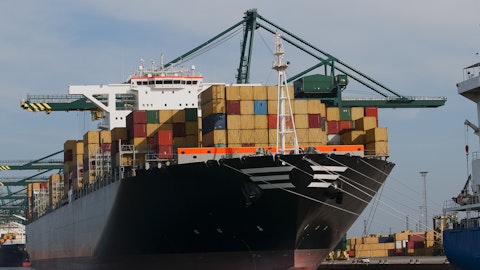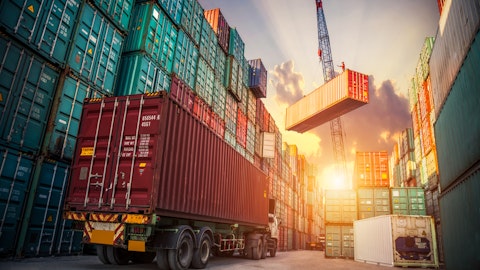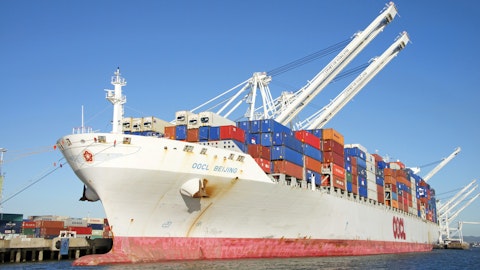Raj Kumar: And Ben, I’ll just add on the Coastal side, it’s David’s point, we’re not seeing any building. And if you were to build, the lead times are going to take you into the 2027 time frame.
Ben Nolan: Right. Well, I appreciate that. You guys answered a lot of questions in that one question there. My second one, though, if I could move over to the D&S side. It seems like some of these supply chain issues are persistent, and we’re not hearing that as much from other places. I’m curious if that is pushing sales into next year and sort of what line of sight you have for the D&S business going into 2024 appreciating that you haven’t given guidance on that yet. But just looking to understand how you feel about sort of what’s already in the bag for next year. And then maybe, David, I know that you and I have talked about the VoltaGrid stuff a little bit. Curious how that is playing out? And if maybe you could give a little color on that within D&S?
David Grzebinski: Sure. Yes, supply chain, I don’t want to overstate the supply chain woes, but it’s almost — it’s hit and miss. We can have problems getting variable frequency drives and then it will clear up for a while and it may come back. We might have problems getting some electric componentry and then they’ll start to deliver. But it has improved in some areas and then a few months later, it goes back again the other way. I will say this, some of our engine suppliers, for example, we can’t get engines until 2025 in some cases. So there is still some heavy headwinds there. That said, we are seeing on parts for engines, that’s getting better. We do a lot of repair work, as you know, Ben. So we are seeing some improvement there.
I would just say, it’s bouncing around. It is on the margin better than it has been, but it’s still impacting us a bit. We did say in our prepared remarks that you could see some shipments in the fourth quarter shift into 2024, but by and large, it’s more the same, I guess, is what I would say in terms of supply chain and shipments, and you’ll see it bounce around little bit.
Ben Nolan: Okay. And on VoltaGrid if you can…
David Grzebinski: Yes. VoltaGrid, for those not familiar, VoltaGrid is one of our customers, we don’t like to talk about direct customers. But they provide power by the hour, not only to the frac space but other places in the industry. And we build a lot of their equipment. They continue to expand and to build. We continue to get orders from them. They’re a world-class organization and growing well, probably best for me not to give you much more detail than that.
Operator: [Operator Instructions]. Our next call comes from Ken Hoexter of Bank of America.
Unidentified Analyst: This is Nathan Donlin for Ken Hoexter. Congratulations on the great quarter. My question is on the Inland Marine side. So seeing that ton miles are down 3Q 11% on partly some of the factors the team has mentioned. I noticed the call out on the Mississippi water levels and some of the lock delay days based off of weather. And just wanted to get a scale on what that represents in terms of an operating challenge from a volume perspective? Should we assume somewhat of a similar level of decline this quarter versus the last?
David Grzebinski: Nathan, thanks for the questions. Yes, your note on the ton miles is a good one, and we should elaborate on that. As you know, the Illinois was closed. And if you think about what we do on the Illinois, it’s usually taking barges from the Gulf Coast all the way up to Illinois and sometimes into Chicago. That’s a long journey and generates a lot of ton miles. And when the Illinois closed, there’s a lot less ton miles just from that. The other thing is crude. We move a lot of crude/condensate from the Northeast, from the Utica and the Marcellus. And those are pretty gassy fields. And so when they’re — when gas prices are low, they’re not producing as much condensate. And so we don’t get those crude moves all the way from the Ohio Valley down to the Gulf Coast.


